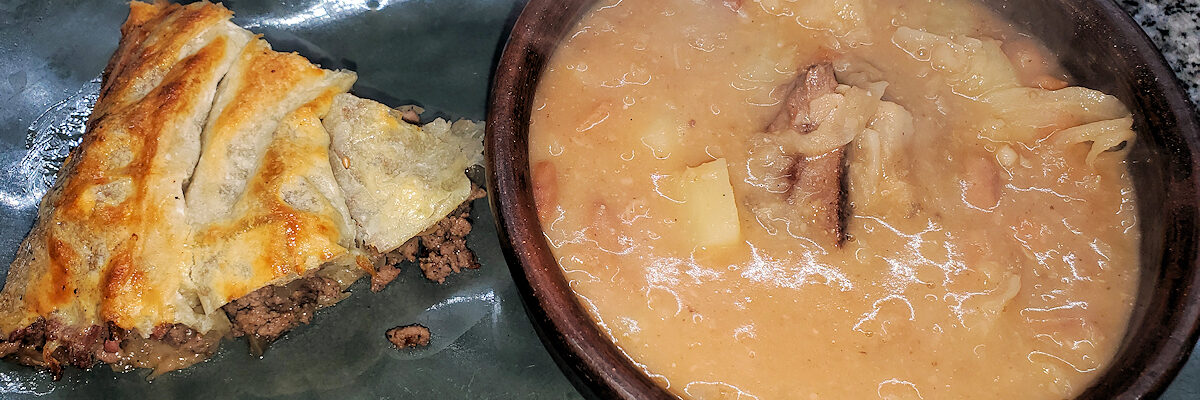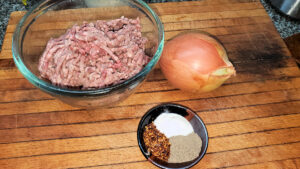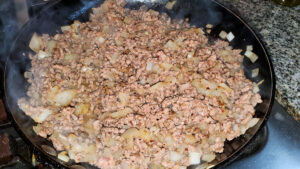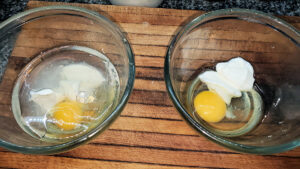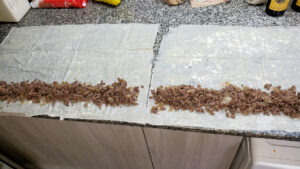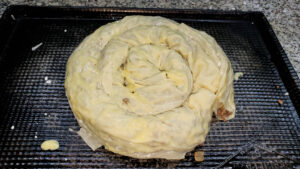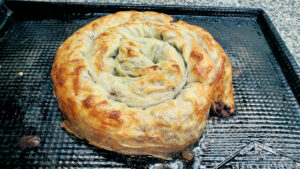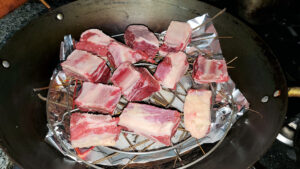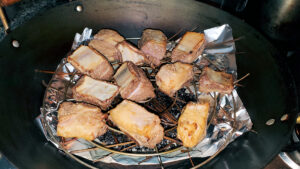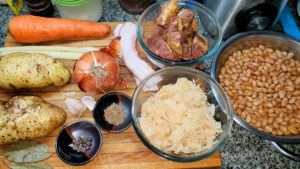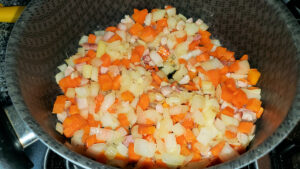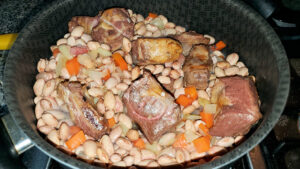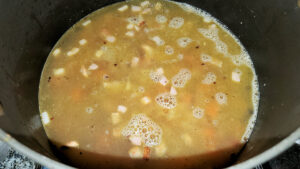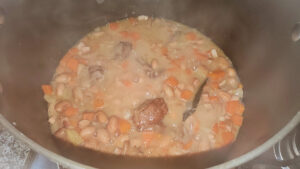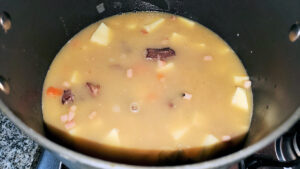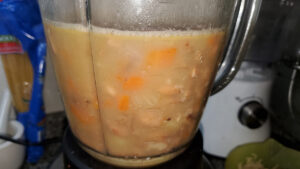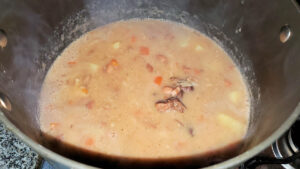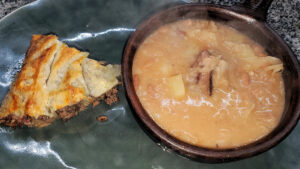When I was born, slightly over six decades ago, there was this moderately large country just east of Italy called Yugoslavia. I didn’t know it at the time, as such things were not among my daily concerns, but it was a cobbled together post-WWI country that merged regions that had been considered Croat, Serb, and Slovene, which in turn had been parts of the Austro-Hungarian Empire. It grew in the aftermath of WWII, adding in parts of Italy, and then was broken up in a series of mini-wars (I suppose not mini for those involved, but in comparison to the WWs) in the 1980s into five, and later more, individual states, on through to 2008. 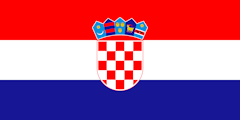 One of those is the Republic of Croatia, our guest in the spotlight in this chapter of The Bread & Soup Project.
One of those is the Republic of Croatia, our guest in the spotlight in this chapter of The Bread & Soup Project.
Croatia, as it stands today, is a small, sort of horseshoe shaped country, now separated from Italy by Slovenia, and wrapping its arms around Bosnia. In total, it encompasses slightly less than 22,000 square miles, allowing it, as Costa Rica in our last entry, to nestle inside West Virginia, though with only four million people, it’s got a mere twice the population of that state. The capital is Zagreb, also the country’s largest city, at 247 square miles, coming in at eight times the size of W.V.’s capital of Charleston, slightly larger than Columbus, Ohio. Though, a slightly smaller population, just a bit over 810,000.
The country is one of the least population dense in Europe, and one of the oldest (in terms of average age) populations in the world. It’s a relatively high income country by comparison to much of Europe. One interesting note, given its population of four million, 91% of whom are Croats by ancestry, is that there are another estimated four millions Croats living in other countries around the world. The official language is Croatian. The population is 86% Catholic, with the balance split almost evenly between Protestant, “Other”, and Atheist/Agnostic.
The cuisine, not surprisingly, has influences from throughout the area – traditional Croat, along with Italian, Austrian, Hungarian, and Turkish, being strong influences. For my filled bread element, I decided to go with a classic Burek, a rolled and coiled filo dough filled with meat, onions, and spices. Various versions of this dish show up throughout the entire surrounding region, and we already looked at a quite different one with the Byorek of Armenia. For the soup, an easy choice, the national dish of the country, Jota. And, away we go.
For the filling of our burek we have ground beef, onion, salt, pepper, and chili flakes.
Saute the chopped onion in a little bit of olive oil until starting to brown, then add the ground beef and spices, and cook just long enough to brown it. Don’t overcook it – keep in mind that this is going to go into dough and then be baked, so it will finish cooking then.
We have two mixtures – the first is an egg, some yogurt, vegetable oil, and water; the second just egg and yogurt. If I were to do this again, I’d make just the second one, split it up, and mix some oil and water into the larger portion of it, as half of each mixture ended up being wasted. Whisk each of them until smooth.
I have made filo dough before, and it’s a pain in the ass. It’s also near impossible, rolling by hand, to get sheets as thin as those that you can buy commercially. So I bought some, cut one big sheet in half, brushed it generously with the first yogurt mixture, and laid a line of the filling out along one edge.
Carefully roll these up into long logs, and coil them, one around the other on a baking sheet. Then brush the outside liberally with the second yogurt mixture.
Pop it into a medium oven and bake for about 30-35 minutes until golden brown. It sort of feels a bit of a cheat on the bread side of this project to have not made the dough myself, but as I said, it’s a pain – I made my own filo for the Albania entry of this project, and while I could do it again, I just didn’t want to. Cut the burek into wedges for serving. It’s good both hot and cold!
So the first thing we need for our Jota is some smoked beef shortribs (or smoked pork spareribs, but I learned to make it with beef ones). I wok smoked them over a mix of coarse salt, raw sugar, and some dried twigs from our loquat tree in the garden. I hot smoked them for about 30 minutes the day before I made the soup (no reason other than I just wanted that step out of the way with for the next day).
We have carrot, celery, potatoes, onion, garlic, bacon, the smoked ribs, bay leaves, juniper berries, cumin seeds, sauerkraut (no, I didn’t make my own – just not worth it for the small quantity I needed and the time involved), and overnight soaked pinto beans, here called porotos regina. In terms of quantity, the ribs, sauerkraut, and beans (while dry) were each about a pound/half a kilo.
In some olive oil, cook the chopped bacon, onion, garlic, celery, and carrot until soft and the onions are nice and transluscent.
Toast and grind the spices, and add to the pot along with the shortribs. Top with water – enough to cover by a couple of inches…
…and realize that your pot isn’t going to hold everything and move it all to a bigger pot. Bring to a boil, reduce heat to low, cover the pot, and leave to cook, stirring occasionally, until the beans are just about ready – a little over an hour.
The beans will absorb most of the water, along with what evaporates…
…add the peeled and diced potatoes, and top with more water, just to cover. Return to a simmer, cover, and cook about 15-20 minutes until the potatoes and beans are nice and soft.
Scoop out a few ladlesful of the soup, making sure not to include either of the bay leaves (you can remove them at this point) nor the shortribs. Puree this portion and return the puree to the pot.
Add the sauerkraut, mix it all together well, heat it back up, and add salt and pepper to taste. It was a couple of teaspoons of salt and one of pepper for this quantity, for me.
And, serve. It’s a bit monochromatic, and my guess is that one wouldn’t normally eat these two together. In fact, other than for the first run at it, I didn’t either. I ended up eating them at separate meals, the jota served with some good, rustic, brown bread, and the burek with a little garlic yogurt and a salad. I like them both, particularly the burek. The sauerkraut obviously adds a distinctive flavor to the soup, and the particular type of sauerkraut you use will change this dish – the traditional Croatian one is made with plenty of juniper and bay leaf.
Next time we’re off to the Caribbean, and the isle of Cuba.
